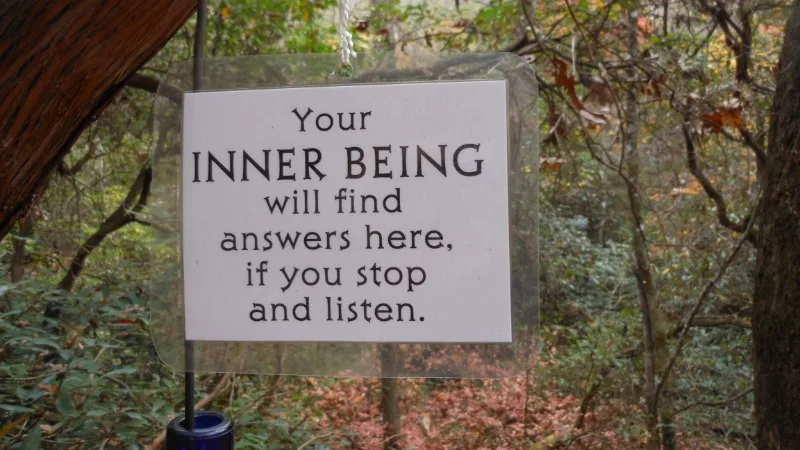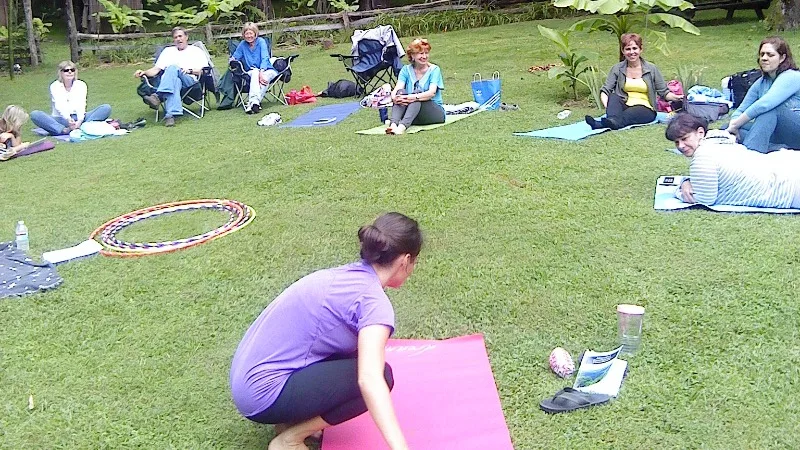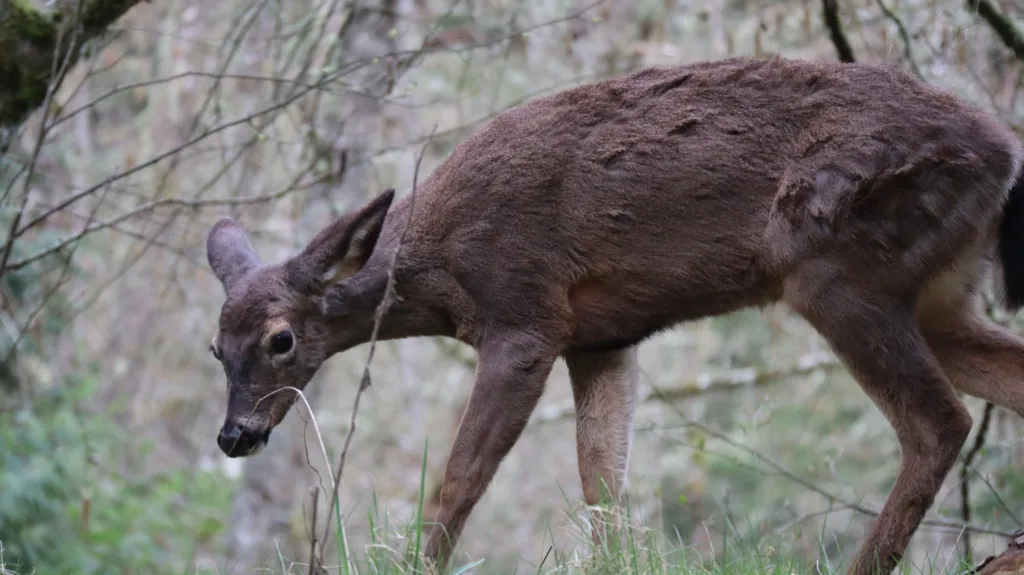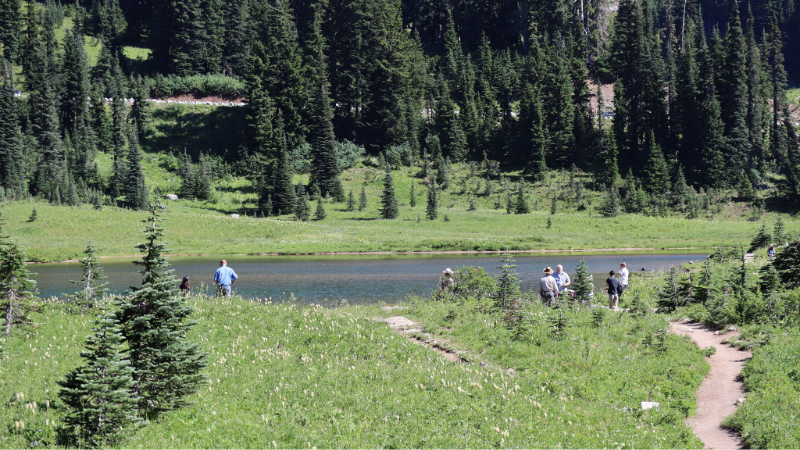Ecotherapy, also known as nature therapy or green therapy, is an approach to mental health treatment that emphasizes the connection between human well-being and the natural environment. It involves various activities and interventions conducted in natural settings, such as forests, parks, or gardens, with the aim of promoting psychological, emotional, and physical health.
Ecopsychology is a field that explores the relationship between humans and the natural world from a psychological perspective. The field of ecopsychology studies how humans interact with nature. Ecopsychology is a philosophy combining elements of psychology and ecology. It is the study of the fact that mental health is contingent upon the health of the environment. Humankind and the environment are part of an interrelated system. We are not separate from nature. We are a part of nature. At its core, ecopsychology suggests that there is a synergistic relation between planetary and personal well-being; that the needs of the one are relevant to the needs of the other. In short, what we do to the environment, we do to ourselves.
Ecotherapy is the practical application of the knowledge gained in ecopsychology. In ecotherapy nature is the “therapist.” In practicing the techniques of ecotherapy, we embrace the healing power of nature. Ecotherapy, also known as nature therapy or green therapy, is an approach to mental health treatment that incorporates outdoor activities, nature-based interventions, and engagement with the natural environment to promote healing and well-being.
The history of ecotherapy can be traced back to the writings of early philosophers and naturalists who recognized the therapeutic benefits of nature. Figures like Henry David Thoreau and John Muir emphasized the restorative power of wilderness and advocated for spending time in nature as a means of reconnecting with oneself and the natural world.
In the 20th century, the field of ecopsychology began to take shape, drawing inspiration from various disciplines including psychology, ecology, and environmental studies. The term “ecopsychology” was coined by Theodore Roszak in his book The Voice of the Earth (1992), which explored the psychological dimensions of humanity’s relationship with nature and called for a deeper understanding of our ecological interconnectedness.
Since then, ecotherapy has gained recognition as a legitimate approach to mental health treatment, with practitioners integrating nature-based interventions into psychotherapy and counseling practices. Ecotherapy techniques may include outdoor therapy sessions, wilderness retreats, horticultural therapy, animal-assisted therapy, and adventure-based activities, all aimed at fostering a deeper connection to nature and promoting holistic well-being.
Research on ecotherapy has shown promising results, indicating that spending time in nature can reduce stress, anxiety, depression, and other psychological symptoms (Bratman et al., 2019; Kondo et al., 2018). Nature-based interventions have been associated with improvements in mood, cognitive function, attention restoration, and overall psychological resilience, highlighting the therapeutic potential of ecotherapy for addressing mental health challenges.
Ecotherapy represents a holistic approach to mental health treatment that recognizes the inherent healing properties of the natural world. Developed from ecopsychological principles, ecotherapy offers individuals opportunities to reconnect with nature, tap into their innate connection to the environment, and cultivate a sense of well-being that extends beyond the confines of traditional therapy settings.
Ecotherapy’s Historical Context and Origins
The historical context and origins of ecotherapy can be traced back to ancient cultures that recognized the therapeutic benefits of nature. Throughout history, various civilizations have revered nature as a source of healing and spiritual renewal. Indigenous cultures around the world have long incorporated nature-based practices into their healing rituals, acknowledging the interconnectedness of humans and the natural world.
In Western societies, the roots of ecotherapy can be found in the writings of philosophers, poets, and naturalists who celebrated the restorative power of nature. Figures like Henry David Thoreau, Ralph Waldo Emerson, and John Muir advocated spending time in nature as a means of reconnecting with oneself, finding solace, and gaining insight into the human condition. Thoreau’s transcendentalist work Walden (1854) and Muir’s writings on the beauty and grandeur of the American wilderness exemplify this reverence for nature as a source of inspiration and renewal.
The early 20th century saw the emergence of therapeutic approaches that incorporated nature-based interventions into mental health treatment. Psychologists such as Carl Jung and Sigmund Freud recognized the psychological significance of nature symbolism and the natural world in dreams, myths, and the collective unconscious. Jung’s concept of the anima mundi, or world soul, reflected the idea of a deep, innate connection between humans and the natural environment. Jung’s Red Book is a profound exploration of the unconscious mind and the human psyche, featuring vivid imagery and symbolic encounters with archetypal figures, which, when interpreted, reveal a deep connection between the individual and the natural world, offering insights relevant to ecotherapy.

The term “ecopsychology” was coined by Theodore Roszak in his book The Voice of the Earth (1992). This work explored the psychological dimensions of humanity’s relationship with nature and called for a deeper understanding of our ecological interconnectedness. Roszak argued that environmental degradation and disconnection from nature contribute to psychological distress and that reconnecting with the natural world can promote healing and well-being.
Since Roszak’s book, ecotherapy has gained recognition as a legitimate approach to mental health treatment, with practitioners integrating nature-based interventions into psychotherapy and counseling practices. Ecotherapy techniques may include outdoor therapy sessions, wilderness retreats, horticultural therapy, animal-assisted therapy, and adventure-based activities, all aimed at fostering a deeper connection to nature and promoting holistic well-being.
The historical context and origins of ecotherapy can be understood as a convergence of ancient wisdom, philosophical insights, and contemporary psychology, all recognizing the therapeutic potential of nature for healing and growth.
Pioneers of Ecotherapy and Ecopsychology
The roots of ecotherapy and ecopsychology can be traced back to pioneering individuals who recognized the profound connection between human psychology and the natural environment. Some of the figures who have played pivotal roles in shaping the development of ecotherapy and ecopsychology are:
Henry David Thoreau
Henry David Thoreau, often regarded as one of the founding figures of environmental philosophy, was a transcendentalist philosopher, writer, and naturalist. His seminal work, Walden; or, Life in the Woods (1854), documents his two-year experiment living in a small cabin by Walden Pond in Massachusetts. Thoreau’s writings extol the virtues of simple living and self-sufficiency, advocating for closer communion with nature as a means of spiritual renewal and personal growth.
Through his observations of the natural world and reflections on the human condition, Thoreau laid the groundwork for understanding the restorative power of nature on the human psyche.
John Muir
John Muir, often referred to as the “Father of the National Parks,” was a Scottish-American naturalist, conservationist, and writer. Muir’s advocacy was instrumental in the establishment of several national parks and protected wilderness areas in the United States, including Yosemite National Park.
His writings, particularly My First Summer in the Sierra (1911), vividly capture the beauty and grandeur of the American wilderness, inspiring generations of nature lovers and conservationists. Muir’s philosophy of “wilderness therapy” emphasized the therapeutic benefits of spending time in nature, believing that immersion in wild places could heal the body, mind, and spirit.
Theodore Roszak
Theodore Roszak, a cultural historian, and social critic is credited with popularizing the term “ecopsychology” in his book The Voice of the Earth: An Exploration of Ecopsychology (1992). In this influential work, Roszak argues that the ecological crisis is fundamentally linked to a crisis of the human psyche, highlighting the interconnectedness of human well-being and the health of the planet.
Roszak called for a new paradigm in psychology that recognizes the intrinsic relationship between humans and the natural world, advocating for ecotherapy as a means of addressing environmental and psychological concerns simultaneously.
Bill Plotkin
Bill Plotkin, a psychologist, wilderness guide, and author, has made significant contributions to the field of ecopsychology through his work on the human-nature relationship and the process of soul initiation. In his book Nature and the Human Soul: Cultivating Wholeness and Community in a Fragmented World (2007), Plotkin presents a framework for understanding human development and psychological healing in the context of nature-based rites of passage. He emphasizes the importance of reconnecting with the more-than-human world as a pathway to individuation and soulful living, offering practices and rituals that honor the ecological self.
Mary-Jayne Rust
Mary-Jayne Rust, a psychotherapist, ecopsychologist, and author, has been instrumental in advancing the field of ecotherapy in the United Kingdom. In her book Nature and Therapy: Understanding Counselling and Psychotherapy in Outdoor Spaces (2014), Rust explores the therapeutic potential of outdoor environments for facilitating healing and personal growth. She advocates for ecotherapy practices that integrate nature-based interventions with traditional psychotherapy approaches, emphasizing the importance of eco-awareness, sensory engagement, and ecological mindfulness in the therapeutic process.
Pioneers of ecotherapy and ecopsychology have played integral roles in deepening our understanding of the interdependence between human well-being and the natural world. Through their writings, advocacy, and clinical work, these visionaries have paved the way for a more holistic approach to mental health treatment that honors the healing power of nature and the ecological foundations of human flourishing.
Evolution of Ecotherapy
Throughout history, humans have intuitively turned to nature for solace, inspiration, and renewal. From ancient healing traditions to modern psychotherapy approaches, the therapeutic benefits of the natural world have been recognized and harnessed for millennia. The evolution of ecotherapy represents a journey of rediscovering and reclaiming our innate connection to the environment as a source of healing and well-being.
The origins of ecotherapy can be traced back to ancient cultures that revered nature as a sacred and integral part of life. Indigenous traditions around the world incorporated nature-based rituals, ceremonies, and practices into healing and spiritual growth. Shamans, medicine men, and wise women utilized the elements of the natural world, including plants, healing herbs, animals, water, and earth, as allies in their healing work, recognizing the interconnectedness of all living beings.
Ecotherapy has gained recognition as a legitimate approach to mental health treatment, with practitioners integrating nature-based interventions into psychotherapy and counseling practices. Ecotherapy techniques may include outdoor therapy sessions, wilderness retreats, horticultural therapy, animal-assisted therapy, and adventure-based activities, all aimed at fostering a deeper connection to nature and promoting holistic well-being.
As interest in ecotherapy continues to grow, there is a need for further research, education, and advocacy to promote its widespread adoption and accessibility. Integrating ecotherapy principles into various settings, including schools, hospitals, workplaces, and communities, can help address the pressing environmental and mental health challenges of our time. By nurturing our connection to nature and fostering a sense of ecological awareness and responsibility, ecotherapy offers a path towards healing and transformation for individuals and society as a whole.

Types of Ecotherapy Interventions
Ecotherapy interventions encompass a variety of nature-based activities and approaches aimed at promoting mental and physical health and well-being. Here are several types of ecotherapy interventions along with brief descriptions:
Adventure-Based Therapy
Adventure-based therapy implements outdoor adventure activities, such as rock climbing, kayaking, or wilderness backpacking, as metaphors for personal and interpersonal growth. Participants engage in experiential learning, teamwork exercises, and problem-solving challenges while building confidence, resilience, and leadership skills (Gass, Gillis, & Russell, 2012).
Animal Assisted Therapy
Animal therapy in the form of contact with pets and wild or domesticated animals enhances self-actualization and can lessen symptoms of depression.
In 2016 Min et al reviewed multiple Animal-Assisted Therapy interventions and found that such activities are highly beneficial to mental, physical, and social health and well-being of the children. Animal-Assisted Therapy was particularly helpful in treating pain, illness, trauma and cancer, and mental and developmental disorders. The study also found that Animal-Assisted Therapy was effective for social and educational purposes such as developing social skills and helping children learn more effectively.
According to Pai-Dhungat and Verma (2020), the connection between humans and animals is imprinted in our collective subconscious and to some extent molds our emotional world. The study demonstrated that the presence of pets/animals helps victims of sexual assault feel more comfortable in therapy settings. Animal-assisted interventions also reduce anxiety, depression, and other post-traumatic stress symptoms. According to the study, the positive feelings that pet therapy induces during therapy sessions with sexual assault victims goes far beyond just the therapy sessions themselves. The effects are long-lasting and continue long after the therapy interventions are over.
Other studies have shown that owning pets, or even just watching fish in an aquarium (Clements, et al, 2019), can greatly reduce stress.
Architecture Incorporating Natural Spaces
Nature can be incorporated into the home environment through the use of plants, an aquarium, or even recorded nature sounds. Alvarsson et al (2010) studied the positive mental health effects of listening to nature sounds and found that just listening to recording of the sounds of nature could reduce stress and hasten recovery after stressful incidents.
Han and Li-Wen (2019) in their international study found that having plants in your house can increase mental and physical health, aid in emotional regulation, and improve attention and concentration.
In a metastudy in 2019 Clements, et al found that having an aquarium in homes or offices had positive effects on mood, stress reduction, physical and chronic pain, improved nutritional intake, and decreased body weight.
Facilitated Wilderness Experiences
In facilitated wilderness experiences, a trained facilitator takes you into the woods for an adventure, usually with a therapeutic purpose. These events can be anything from a wilderness experience in ecotherapy led by a therapist or counselor, to a hunting trip led by a wilderness guide. Mutz and Müller in 2016 demonstrated that facilitated wilderness journeys in the Alps increased self-efficacy, mindfulness, and subjective well-being.
Naor, et al (2020) in a metastudy on wilderness experiences found that the silence of such adventures naturally provides emotional release, and promotes resting of the mind, a sense of peace and tranquility, the opportunity for introspection and reflection, a sense of being fully present in the moment, and a feeling of emotional restoration. In short, wilderness experiences, whether facilitated or unfacilitated, promote mindful states of being.
Such programs may also reduce feelings of time pressure and mental stress among participants, creating a greater sense of calm and self-efficacy.
Horticultural Therapy
Horticultural therapy is similar to therapeutic gardening in that it utilizes gardening and plant-related activities as therapeutic interventions to improve mood, reduce stress, and enhance social interaction. Participants engage in activities such as planting, cultivating, and harvesting plants while connecting with the natural world and nurturing their sense of purpose and accomplishment (Sempik, Aldridge, & Becker, 2003).
Nature Walks and Outdoor Therapy Sessions
Guided walks or therapy sessions are conducted in natural settings such as parks, forests, or coastal areas. Participants engage in mindfulness practices, sensory exploration, and reflective exercises while immersing themselves in the sights, sounds, and smells of nature (Jordan, Hinds, & Inoue, 2016).

Outdoor Classrooms
Purcell, et all in 2007 revealed that outdoor classrooms enhanced many critical factors of the educational experience, including: Enhanced retention, better focus, more attention to detail, less hyperactivity, more relaxation, increased confidence and self-esteem, and better cognitive functioning.
A 2019 study by Guardino, et al reported that both teachers and students demonstrated an increased perception of wellbeing, pleasure, and interest when teaching and learning in the outdoor classroom. The study also found that children with disabilities were less distracted and more on-task when working in an outdoor classroom.
Therapeutic Gardens
Sempik & Spurgeon (2006) demonstrated that therapeutic gardening reduces stress and lessens symptoms of depression. Blair (2009) discovered that gardening can be used as a means of helping school children enhance self-sufficiency, social identity, meaning, and self-integration.
Thaneshwari, et al in a 2018 literature review reported that therapeutic gardening assists in stress reduction of staff and patients, facilitates more rapid healing in hospital settings, increases work efficiency, and reduces the cost of treatment for health care facilities. The study also found that therapeutic gardening eases suffering from mental illnesses like autism, dementia, and Alzheimer’s.
Vacations Outdoors
Sponselee, et al (2004) discovered that outdoor activities reduce stress and restore energy. If you’ve ever enjoyed a vacation spent camping, hiking, walking on the beach, or participating in other pleasurable outdoor activities, then you’re already aware of the regenerative power of taking time off to appreciate nature. Roggenbuck & Driver (2000) found that you don’t even need a facilitator or guide to enjoy the health and well-being benefits of the use of wilderness areas.
Jain and Goel (2019) found that vacations act as buffers against the stress of daily living. They found that vacationers feel just as happy and rejuvenated after some time has elapsed as they did while on vacation, and that vacationers differ from non-vacationers in terms of their happiness, resilience, peace of mind, and mindfulness levels. Their study also explored different subtypes of vacations and found that the effects were greater when more vacation time was spent outdoors.
Bhalla, et al (2020) found that vacations have benefits in multiple dimensions, including physical, cognitive, stress reduction, sense of wellbeing, and overall self-esteem.
Wilderness Therapy
Wilderness therapy involves immersive experiences in natural wilderness settings, often conducted in small groups with trained facilitators. Participants engage in outdoor activities, adventure challenges, and group discussions aimed at fostering personal growth, resilience, and self-awareness (Gass, Gillis, & Russell, 2012).
While this list is by no means exhaustive, these are some of the more common ecotherapy techniques used today. These ecotherapy interventions offer diverse opportunities for individuals to reconnect with nature, tap into their inherent resilience, and cultivate a deeper sense of well-being and belonging in the natural world.
Ecotherapy’s Theoretical Framework
The theoretical framework of ecotherapy draws upon principles from various disciplines, including psychology, ecology, environmental studies, and anthropology. This interdisciplinary approach emphasizes the reciprocal relationship between humans and nature and acknowledges the therapeutic benefits of engaging with the natural world.
One foundational concept within the theoretical framework of ecotherapy is the biophilia hypothesis, proposed by biologist E.O. Wilson (1984), which suggests that humans have an innate affinity for nature and living organisms. According to this hypothesis, humans are biologically predisposed to seek connections with nature, and exposure to natural environments can promote physical and psychological well-being.
From a psychological perspective, ecotherapy is informed by principles of ecopsychology, a field that explores the psychological dimensions of humanity’s relationship with nature. Theodore Roszak, one of the pioneers of ecopsychology, advocated for a deeper understanding of the ecological and cultural roots of human behavior and emphasized the importance of reconnecting with nature for individual and planetary health (Roszak, 1992).
Ecotherapy interventions often incorporate principles of mindfulness and experiential learning, drawing on practices from contemplative traditions and outdoor education. Mindfulness-based approaches encourage individuals to cultivate present-moment awareness and sensory engagement with the natural environment, fostering a deeper connection to nature and promoting relaxation, stress reduction, and emotional regulation (Kabat-Zinn, 1994). Mindfulness-Based Ecotherapy is a framework that utilizes mindfulness and ecotherapy together.
Often ecotherapy interventions are guided by principles of environmental stewardship and sustainability, emphasizing the importance of ecological literacy and responsible engagement with the natural world. By fostering a sense of environmental connectedness and promoting pro-environmental behaviors, ecotherapy aims to address both individual and collective well-being while fostering a deeper appreciation for the Earth’s ecosystems (Clayton, 2003).
The theoretical framework of ecotherapy integrates insights from psychology, ecology, and environmental studies to promote holistic well-being and ecological awareness. By recognizing the reciprocal relationship between humans and nature and harnessing the therapeutic benefits of engaging with natural environments, ecotherapy offers a transformative approach to healing that honors the interconnectedness of all living beings.
Ecotherapy can be effectively integrated with cognitive behavioral therapy (CBT) to enhance therapeutic outcomes and promote holistic well-being. By combining elements of both approaches, individuals can address cognitive, emotional, and behavioral patterns while fostering a deeper connection to nature and the environment.
In CBT, cognitive restructuring involves identifying and challenging maladaptive thought patterns. Ecotherapy provides a supportive natural environment for this process, offering a serene and peaceful setting where individuals can explore their thoughts and beliefs in a relaxed atmosphere. Nature walks or outdoor therapy sessions can facilitate cognitive restructuring by promoting mindfulness and self-reflection while surrounded by the calming sights and sounds of nature.
Exposure therapy is a core component of CBT for anxiety disorders, involving gradual exposure to feared stimuli to reduce anxiety responses. Ecotherapy offers opportunities for exposure therapy in natural settings, where individuals can gradually confront and overcome specific fears or phobias while immersed in nature. For example, individuals with social anxiety may participate in group therapy activities in outdoor settings to practice social skills and reduce avoidance behaviors.
Behavioral activation is a key strategy in CBT for depression, focusing on increasing engagement in rewarding activities to alleviate depressive symptoms. Ecotherapy provides a wealth of outdoor activities that promote positive mood and well-being, such as hiking, gardening, or wildlife observation. Engaging in these activities outdoors can enhance the effectiveness of behavioral activation interventions by incorporating physical exercise, exposure to natural light, and connection with the natural world.
Mindfulness techniques are commonly integrated into CBT to promote present-moment awareness and acceptance of thoughts and emotions. Ecotherapy offers a conducive environment for practicing mindfulness-based interventions, such as nature-based meditation, deep breathing exercises, or sensory awareness activities. By immersing themselves in the sights, sounds, and sensations of nature, individuals can cultivate mindfulness skills and develop a greater sense of inner peace and calm. This is the core of the theoretical basis of Mindfulness-Based Ecotherapy (MBE).
In CBT, cognitive and behavioral experiments are used to test the validity of maladaptive beliefs and assumptions. Ecotherapy can incorporate environmental cognition exercises, where individuals explore their perceptions and attitudes towards nature and the environment. For example, individuals may challenge negative beliefs about nature (e.g., “nature is boring’) by engaging in outdoor activities and reflecting on their experiences.
Integrating ecotherapy with cognitive behavioral therapy offers a comprehensive approach to mental health treatment that addresses cognitive, emotional, and behavioral aspects of well-being while fostering a deeper connection to nature. By combining evidence-based CBT techniques with nature-based interventions, individuals can experience synergistic therapeutic benefits and enhance their overall quality of life.

Integrating Mindfulness with Ecotherapy
Integrating mindfulness practices with ecotherapy offers a powerful combination for promoting well-being and fostering a deeper connection to the natural world. Mindfulness involves cultivating present-moment awareness and non-judgmental acceptance of one’s thoughts, emotions, and sensory experiences (Kabat-Zinn, 1994). When combined with ecotherapy, mindfulness techniques can enhance the therapeutic benefits of engaging with nature by deepening sensory engagement, promoting relaxation, and facilitating a sense of interconnectedness with the environment.
Here are some ways to incorporate mindfulness with ecotherapy. All of these interventions and techniques can be used within the context of Mindfulness-Based Ecotherapy :
- Nature-Based Meditation: Practicing meditation in natural settings can deepen mindfulness and enhance the therapeutic effects of ecotherapy. Individuals can find a quiet spot in nature, such as a tranquil forest glade or a serene riverside, and engage in mindfulness meditation practices such as mindful breathing, body scans, or loving-kindness meditation. By focusing attention on natural elements, such as the sound of birdsong or the sensation of sunlight on the skin, individuals can cultivate a deeper sense of presence and connection with the environment (Jo et al., 2019).
- Sensory Awareness Activities: Mindful sensory exploration of the natural world can deepen one’s appreciation of the environment and foster a sense of wonder and awe. Individuals can engage in sensory awareness activities, such as “noticing walks” or “sit spot observations,” where they deliberately tune into their senses and observe the sights, sounds, smells, textures, and tastes of nature without judgment or interpretation. By immersing themselves fully in sensory experiences, individuals can cultivate a heightened sense of awareness and aliveness in the present moment (Hinds & Sparks, 2008).
- Mindful Movement Practices: Mindful movement practices, such as walking meditation or yoga in nature, can promote relaxation, embodiment, and connection with the environment. Participants can engage in slow, deliberate movements while paying attention to bodily sensations, breath, and surroundings. Walking mindfully through natural landscapes allows individuals to synchronize their movements with the rhythms of nature and cultivate a sense of harmony and balance (Goodall et al., 2019).
- Nature-Based Mindfulness Retreats: Retreats that combine mindfulness practices with immersion in natural environments offer extended opportunities for deepening self-awareness and connection to nature. Participants can engage in guided mindfulness sessions, reflective exercises, and group discussions while surrounded by the beauty and tranquility of natural settings. These retreats provide a supportive and nurturing space for individuals to cultivate mindfulness skills, gain insights, and experience personal transformation (Samuelson et al., 2016).
Integrating mindfulness practices with ecotherapy offers a synergistic approach to promoting well-being and ecological awareness. By cultivating present-moment awareness and non-judgmental acceptance in natural settings, individuals can deepen their connection to nature, reduce stress, and enhance their overall quality of life.
Mechanisms of Change in Ecotherapy
Ecotherapy facilitates change through a variety of mechanisms that harness the therapeutic benefits of engaging with the natural environment. By immersing individuals in natural settings and fostering a deeper connection to the environment, ecotherapy promotes physical, psychological, and spiritual well-being, leading to positive changes in mood, behavior, and outlook on life.
Spending time in nature has been shown to reduce stress levels and promote relaxation (Barton & Pretty, 2010). Ecotherapy interventions, such as nature walks, gardening, or outdoor mindfulness practices, provide opportunities for individuals to unwind, decompress, and escape the pressures of daily life. The calming sights, sounds, and rhythms of nature promote a sense of tranquility and inner peace, helping individuals manage stress more effectively and restore balance to their lives.
Hölzel et al (2011) demonstrated that meditative states of mindfulness stimulate neural growth in the cerebral cortex in the areas of the brain responsible for emotional regulation, good judgment, insight, and impulse control. Nature experiences have been demonstrated in several studies to produce meditative states (fascination, relaxation, and mindfulness).
Exposure to natural environments has been linked to improvements in mood and emotional well-being (Bratman et al., 2019). Ecotherapy interventions can elevate mood, reduce symptoms of depression and anxiety, and increase feelings of happiness and contentment. The beauty and serenity of natural landscapes evoke positive emotions and inspire awe, gratitude, and a sense of connection to something larger than oneself, fostering a more positive outlook on life (Kaplan, 1995).

Engaging with nature can stimulate cognitive processes and promote changes in behavior. Ecotherapy interventions, such as outdoor education programs or wilderness retreats, offer opportunities for learning, problem-solving, and skill-building in natural settings. Exposure to diverse ecosystems and outdoor challenges can expand individuals’ cognitive horizons, enhance creativity, and foster a sense of mastery and self-efficacy (Gass, Gillis, & Russell, 2012).
Nature-based activities and group experiences in ecotherapy settings promote social connection and support. Participating in outdoor adventures, communal gardening projects, or nature-based mindfulness retreats fosters a sense of camaraderie, belonging, and mutual support among participants. Sharing meaningful experiences in nature strengthens interpersonal bonds, cultivates empathy and compassion, and provides opportunities for personal growth and relational healing (Jordan et al., 2016).
Ecotherapy promotes ecological literacy and environmental stewardship by fostering a deeper connection to nature and raising awareness of environmental issues. Engaging with the natural world cultivates a sense of reverence for the Earth’s ecosystems and a commitment to sustainable living practices. Individuals who participate in ecotherapy interventions are more likely to adopt pro-environmental behaviors, such as recycling, conservation, and advocacy for environmental causes (Clayton, 2003).
Ecotherapy facilitates change by providing individuals with opportunities to reconnect with nature, restore balance to their lives, and cultivate a deeper sense of well-being and ecological awareness. Through a combination of stress reduction, mood enhancement, cognitive stimulation, social support, and environmental engagement, ecotherapy promotes holistic healing and positive transformation in individuals and communities.
Appropriateness of Ecotherapy
Ecotherapy can be an appropriate intervention for a wide range of individuals and mental health concerns, particularly those who may benefit from connecting with nature and exploring the therapeutic potential of the natural environment. Here are some situations where ecotherapy might be considered an appropriate intervention:
- Stress and Burnout: Ecotherapy can be beneficial for individuals experiencing high levels of stress or burnout. Spending time in natural settings and engaging in nature-based activities, such as hiking, gardening, or mindfulness practices, can promote relaxation, reduce physiological arousal, and restore mental and emotional balance (Hartig et al., 2014).
- Anxiety and Depression: Ecotherapy interventions have been shown to alleviate symptoms of anxiety and depression by providing opportunities for stress reduction, mood enhancement, and social support. Exposure to natural environments has been associated with improvements in mood, emotional well-being, and overall psychological resilience (Bratman et al., 2019).
- Trauma and PTSD: Ecotherapy can be a valuable adjunctive treatment for individuals with a history of trauma or post-traumatic stress disorder (PTSD). Nature-based interventions, such as wilderness therapy or animal-assisted therapy, offer safe and supportive environments for processing traumatic experiences, building resilience, and promoting healing (Gass, Gillis, & Russell, 2012).
- Attention Deficit Hyperactivity Disorder (ADHD): Nature-based activities and outdoor experiences can be particularly beneficial for individuals with ADHD. Exposure to natural environments has been shown to improve attentional focus, impulse control, and cognitive functioning in individuals with ADHD, leading to reductions in hyperactivity and impulsivity (Kuo & Faber Taylor, 2004).
- Substance Abuse and Addiction: Ecotherapy interventions, such as wilderness therapy or horticultural therapy, can be effective components of substance abuse treatment programs. Engaging in outdoor activities and connecting with nature can promote self-awareness, emotional regulation, and healthy coping skills, supporting individuals in their recovery journey (Russell et al., 2015).
- Chronic Illness and Pain Management: Nature-based interventions can complement traditional medical treatments for individuals with chronic illnesses or pain conditions. Spending time in natural environments has been shown to reduce pain perception, improve mood, and enhance quality of life for individuals with chronic health concerns (Maller et al., 2006).
Ecotherapy may be an appropriate intervention for individuals experiencing a wide range of mental health concerns, as well as those seeking to enhance their overall well-being and quality of life. By harnessing the therapeutic benefits of nature, ecotherapy offers a well-rounded approach to healing that honors the interconnectedness of mind, body, and environment.
Inappropriateness of Ecotherapy
While ecotherapy can be a beneficial intervention for many individuals, there are certain situations where it may not be appropriate or may even be contraindicated. Understanding these limitations is essential for providing ethical and effective mental health care. Here are some scenarios where ecotherapy might not be suitable:
- Severe Mental Illness: Individuals with severe mental illnesses such as schizophrenia, bipolar disorder, or severe depression may not be suitable candidates for ecotherapy, especially if they are experiencing acute symptoms or significant impairment in functioning. In these cases, individuals may require more intensive psychiatric treatment and stabilization before engaging in nature-based interventions (Bratman et al., 2019).
- Safety Concerns: Ecotherapy interventions often involve outdoor activities in natural environments, which may pose safety risks for certain individuals, particularly those with physical disabilities, medical conditions, or limited mobility. It is important to assess individuals’ physical health and mobility limitations to ensure their safety during outdoor activities and adapt interventions accordingly (Barton & Pretty, 2010). There may also be safety concerns for individual counselors or therapists in outdoor environments, especially when facilitating groups or individuals with a propensity for violence.
- Environmental Sensitivities: Some individuals may have allergies, sensitivities, or aversions to certain natural elements, such as pollen, insects, or extreme weather conditions, which could exacerbate symptoms or cause distress during ecotherapy sessions. It is essential to consider individuals’ environmental sensitivities and preferences when planning outdoor activities and ensure that interventions are tailored to their specific needs and comfort levels (Hartig et al., 2014).
- Limited Access to Nature: Individuals who reside in urban or densely populated areas with limited access to green spaces may face challenges participating in ecotherapy interventions. In such cases, alternative interventions or accommodations may be necessary to provide opportunities for nature-based experiences, such as virtual nature simulations, indoor gardening, or nature-inspired art therapy (Hansen et al., 2017).
- Lack of Interest or Motivation: Ecotherapy may not be appropriate for individuals who lack interest in or motivation for outdoor activities or who do not resonate with nature-based experiences. It is important to assess individuals’ preferences, interests, and readiness for ecotherapy and explore alternative interventions that align with their goals and preferences for treatment (Bratman et al., 2019).
While ecotherapy can be a valuable and effective intervention for many individuals, it is not suitable for everyone. Mental health professionals should carefully consider individual characteristics, preferences, and contraindications when recommending or implementing ecotherapy interventions, and tailor treatment plans accordingly to ensure the safety, well-being, and engagement of their clients.
Implementation of Ecotherapy
The implementation of ecotherapy involves a thoughtful and intentional approach to integrating nature-based interventions into mental health treatment. Here are some key considerations for implementing ecotherapy, supported by relevant research:
- Assessment and Treatment Planning: Begin by conducting a thorough assessment of the individual’s mental health history, current symptoms, strengths, preferences, and goals. Collaborate with the client to develop a personalized treatment plan that incorporates ecotherapy interventions tailored to their needs and interests (Hartig et al., 2014).
- Nature-Based Activities: Select nature-based activities and interventions that align with the client’s preferences, comfort level, and treatment goals. Options may include nature walks, outdoor mindfulness practices, gardening, animal-assisted therapy, wilderness experiences, or nature-based arts and crafts. Consider the accessibility of outdoor environments and adapt activities to accommodate individuals with physical or sensory limitations (Hansen et al., 2017).
- Safety and Risk Management: Prioritize safety considerations when planning outdoor activities and assess potential risks associated with natural environments, such as weather conditions, terrain hazards, or wildlife encounters. Develop safety protocols, provide appropriate supervision, and ensure that participants are adequately prepared and equipped for outdoor experiences. Address any environmental sensitivities or health concerns that may impact individuals’ participation (Barton & Pretty, 2010).
- Therapeutic Relationship: Cultivate a therapeutic relationship characterized by trust, empathy, and collaboration. Create a supportive and nonjudgmental space where clients feel comfortable sharing their thoughts, emotions, and experiences related to nature and the environment. Use ecotherapy interventions to deepen the therapeutic alliance and facilitate the exploration of clients’ connections to nature and their personal narratives (Bratman et al., 2019).
- Mindfulness and Reflection: Integrate mindfulness practices into ecotherapy sessions to enhance present-moment awareness, sensory engagement, and self-reflection. Encourage clients to notice and savor the sights, sounds, and sensations of nature, and guide them in reflecting on the emotional and cognitive responses evoked by their experiences. Use nature-based metaphors and symbols to facilitate meaning-making and insight (Kabat-Zinn, 1994).
- Evaluation and Outcomes: Regularly assess the effectiveness of ecotherapy interventions and monitor changes in clients’ mental health symptoms, well-being, and quality of life. Use standardized measures, self-report assessments, and qualitative feedback to evaluate treatment progress and identify areas for adjustment or refinement. Document client outcomes and experiences to contribute to the evidence base for ecotherapy efficacy and inform future practice (Bratman et al., 2019).
The implementation of ecotherapy involves a holistic and client-centered approach that integrates nature-based interventions into mental health treatment. By incorporating ecotherapy into clinical practice, mental health professionals can harness the healing power of nature to promote well-being, resilience, and connection to the environment.
Ecotherapy Effectiveness and Evidence Base
Recent peer-reviewed studies have explored the effectiveness of ecotherapy in improving mental health outcomes. Here are a few examples:
- Forest Bathing and Stress Reduction: A study by Song et al. (2021) investigated the effects of forest bathing, a popular form of ecotherapy in which individuals engage in mindful activities while immersed in a forest environment, on stress reduction. The researchers found that participants who participated in forest bathing experiences exhibited significant reductions in stress levels compared to control groups.
- Gardening and Depression Relief: A study by Gonzalez et al. (2019) explored the impact of gardening on depression relief among individuals with depression. The researchers found that participants who engaged in a gardening intervention experienced significant reductions in depressive symptoms and reported improvements in overall well-being compared to a control group.
- Nature Walks and Anxiety Reduction: A study by Pretty et al. (2019) examined the effects of nature walks on anxiety reduction. The researchers found that participants who engaged in regular nature walks experienced significant reductions in anxiety levels and reported greater feelings of relaxation and well-being compared to those who did not engage in such walks.
In a 2005 study on the effects of nature, van den Berg and ter Heijne introduced the concepts of focused attention and fascination. Focused attention is a concentrated cognitive effort to avoid distractions in the environment, while fascination is a natural interest in the environment, requiring little or no effort of concentration. The study found that wilderness or nature experiences produce fascination while man-made environments tend to require more focus.
nvironments that promote fascination have been demonstrated to reduce stress, improve concentration, and promote overall wellbeing. A natural environment (including flora, fauna, natural scents, music, or natural sounds, etc.) promotes fascination and requires less reliance on focused attention. With less demands being made on focused attention, more cognitive resources are available for the heightened awareness necessary to achieve a peak experience or a mindful, meditative state.
A metastudy on the benefits of ecotherapy by Franco et al (2017) concluded that experiences in natural spaces lead to increased self-esteem, an increased internal locus of control (meaning that people feel in control of their circumstances instead of being controlled by their circumstances), deep reflective experiences, vision-questing (determining a life path), enhanced abstinence effects for people with addictions, feelings of connectedness to nature; feelings of oneness, lowered heart rate and blood pressure, enhanced stress management capabilities, better immune system functioning, lessened recovery time from illness or surgery, and better quality-of-life ratings from people who live in suburbs designed to incorporate green spaces.
These studies provide evidence for the effectiveness of ecotherapy interventions, such as forest bathing, gardening, and nature walks, in promoting mental health and well-being. However, more research is needed to further explore the mechanisms underlying ecotherapy and its potential applications in clinical and community settings.

The Future of Ecotherapy
As ecotherapy continues to gain recognition for its potential benefits to mental health and well-being, several promising areas of potential future research are emerging. These areas include:
- Neurobiological Mechanisms: Investigating the neurobiological underpinnings of ecotherapy can provide insights into how exposure to natural environments influences brain function and mental health. Research may focus on neuroimaging studies to examine changes in brain activity, neurotransmitter levels, and neural connectivity associated with ecotherapy interventions.
- Dose-Response Relationships: Understanding the dose-response relationships between nature exposure and mental health outcomes is essential for optimizing ecotherapy interventions. Future research may explore how factors such as duration, frequency, and intensity of nature exposure affect treatment efficacy and long-term outcomes.
- Population-Specific Effects: Examining the differential effects of ecotherapy across various demographic and clinical populations can help tailor interventions to specific needs. Research may investigate how factors such as age, gender, socioeconomic status, and clinical diagnosis influence individuals’ responses to ecotherapy.
- Virtual Nature Interventions: With advancements in technology, there is growing interest in virtual nature interventions as a potential alternative to traditional ecotherapy approaches. Future research may explore the effectiveness of virtual reality (VR) and augmented reality (AR) simulations of natural environments in improving mental health outcomes and accessibility to ecotherapy.
- Ecotherapy in Urban Settings: As urbanization continues to rise, there is a need to explore the benefits of ecotherapy interventions in urban environments. Research may investigate the effectiveness of urban green spaces, community gardens, green infrastructure, and nature-based design principles in promoting mental health and resilience among urban dwellers.
- Longitudinal Studies: Conducting longitudinal studies can provide valuable insights into the long-term effects of ecotherapy on mental health outcomes, resilience, and quality of life. Future research may follow participants over extended periods to assess the sustained benefits of ecotherapy interventions and identify factors that contribute to long-term resilience.
- Combination Therapies: Exploring the synergistic effects of combining ecotherapy with other therapeutic modalities, such as cognitive-behavioral therapy (CBT), mindfulness-based interventions, or animal-assisted therapy, may enhance treatment outcomes for individuals with complex mental health needs.
- Cultural and Indigenous Perspectives: Integrating cultural and indigenous perspectives on the healing power of nature can enrich our understanding of ecotherapy practices and inform culturally sensitive interventions. Future research may collaborate with indigenous communities to explore traditional healing practices involving nature connection and incorporate cultural wisdom into ecotherapy approaches.
By addressing these areas of research, scholars and practitioners can further advance our understanding of ecotherapy’s therapeutic mechanisms, optimize intervention strategies, and promote equitable access to nature-based healing opportunities.
Criticisms and Limitations of Ecotherapy
While ecotherapy offers promising benefits for mental health and well-being, it is important to acknowledge potential limitations and criticisms associated with this approach. Here are some key considerations, supported by relevant research:
- Access and Equity: One of the primary criticisms of ecotherapy is the issue of access and equity. Not everyone has equal access to natural environments or the resources necessary to participate in outdoor activities. Individuals living in urban areas or marginalized communities may face barriers to accessing green spaces, such as limited transportation, safety concerns, or a lack of nearby parks or nature reserves (Bell et al., 2018). This can be ameliorated to some degree through the use of indoor plants, nature sounds, and potential future VR technologies.
- Safety and Risk: Engaging in outdoor activities carries inherent risks, including exposure to environmental hazards, weather-related emergencies, or encounters with wildlife. Therapists must assess and mitigate potential risks associated with ecotherapy interventions to ensure the safety and well-being of participants, particularly those with physical disabilities, medical conditions, or limited outdoor experience (Barton & Pretty, 2010).
- Environmental Impact: Critics argue that ecotherapy interventions, particularly those involving wilderness experiences or outdoor recreation, may inadvertently contribute to environmental degradation or harm natural ecosystems. Therapists must balance the therapeutic benefits of outdoor activities with environmental stewardship principles, promoting responsible and sustainable practices that minimize ecological footprint and respect the integrity of natural environments (Jordan et al., 2016).
- Cultural Sensitivity: Ecotherapy interventions may not always be culturally sensitive or relevant to diverse populations with varying cultural beliefs, values, and traditions regarding nature and the environment. Therapists must consider cultural perspectives and preferences when designing ecotherapy programs and ensure that interventions are inclusive, respectful, and culturally appropriate for all participants (Hansen et al., 2017).
- Evidence Base and Research Gaps: While there is growing interest in ecotherapy, the evidence base supporting its efficacy and effectiveness remains limited compared to traditional forms of psychotherapy. Many studies on ecotherapy are small-scale, qualitative, or lack rigorous methodological controls, making it difficult to draw firm conclusions about its therapeutic benefits. Further research is needed to establish the effectiveness of ecotherapy interventions across different populations, settings, and mental health outcomes (Bratman et al., 2019).
While ecotherapy holds promise as a holistic and nature-based approach to mental health treatment, it is not without its limitations and criticisms. Therapists must carefully consider these factors and address potential challenges when incorporating ecotherapy into clinical practice, ensuring that interventions are accessible, safe, culturally sensitive, and supported by empirical evidence.
Training and Certification in Ecotherapy
The need for training and certification in ecotherapy is paramount to ensure that mental health professionals possess the knowledge, skills, and competencies necessary to implement nature-based interventions ethically and effectively. While ecotherapy draws upon principles from psychology, ecology, and environmental studies, it also requires specialized training in areas such as risk management, environmental ethics, and therapeutic techniques tailored to outdoor settings.
Here are some key considerations for training and certification for ecotherapists, supported by relevant research:
- Ethical Practice: Training in ecotherapy should emphasize ethical principles and guidelines specific to outdoor therapy settings, such as informed consent, confidentiality, boundaries, and duty of care. Therapists must navigate unique ethical challenges related to safety, environmental impact, and client autonomy when conducting sessions in natural environments (Jordan et al., 2016).
- Risk Assessment and Management: Ecotherapy training should include instruction on risk assessment and management strategies for outdoor activities, such as wilderness first aid, emergency response protocols, and navigation skills. Therapists must be prepared to identify and mitigate potential risks associated with natural environments, weather conditions, terrain hazards, and wildlife encounters to ensure the safety of participants (Barton & Pretty, 2010).
- Environmental Education: Ecotherapy certification programs should incorporate environmental education components to deepen therapists’ understanding of ecological principles, biodiversity, and ecosystems. Therapists should be knowledgeable about local flora and fauna, conservation practices, and sustainable stewardship principles to promote environmental awareness and minimize ecological impact during outdoor sessions (Hansen et al., 2017).
- Nature-Based Interventions: Training in ecotherapy should provide therapists with a repertoire of nature-based interventions and therapeutic techniques tailored to outdoor settings. This may include activities such as mindfulness practices, sensory awareness exercises, storytelling, nature journaling, and eco-art therapy. Therapists should be skilled in adapting evidence-based interventions to outdoor environments and integrating natural elements into the therapeutic process (Russell et al., 2015).
- Cultural Competence: Ecotherapy training should incorporate cultural competence components to ensure that therapists are sensitive to diverse perspectives, values, and traditions regarding nature and the environment. Therapists should be able to recognize and respect cultural differences in attitudes towards nature, access to green spaces, and spiritual beliefs related to the natural world (Bell et al., 2018).
- Supervised Practice and Continuing Education: Ecotherapy certification programs should include supervised practicum experiences and opportunities for ongoing professional development and mentorship. Therapists should have access to supervision, consultation, and peer support networks to enhance their clinical skills, address ethical dilemmas, and stay abreast of emerging research and best practices in ecotherapy (Hartig et al., 2014).
Training and certification in ecotherapy are essential to equip mental health professionals with the specialized knowledge, skills, and competencies needed to integrate nature-based interventions ethically and effectively into clinical practice. By emphasizing ethical practice, risk management, environmental education, nature-based interventions, cultural competence, and ongoing professional development, ecotherapy training programs can ensure that therapists are prepared to provide ecotherapy in promoting mental health and well-being.
Introduction to Ecotherapy: Summary
This chapter lays the groundwork for understanding the therapeutic potential of nature and explores the historical roots and theoretical underpinnings of ecotherapy and Mindfulness-Based Ecotherapy. We offered a comprehensive overview of ecotherapy, tracing its historical roots, evolution, and diverse practices. We examined the theoretical foundations, practical applications, and the growing evidence base supporting its effectiveness, as well as discussing future directions and the challenges it faces.
Ecotherapy, also known as nature therapy, finds its origins in ancient practices and cultural traditions that recognized the healing power of nature. Historical contexts include the use of natural settings in traditional healing rituals and the Romantic movement’s emphasis on nature’s restorative effects on the human spirit. The modern conceptualization of ecotherapy began emerging in the late 20th century, drawing from environmental psychology, ecological psychology, and therapeutic approaches that emphasized human-nature connections.
Pioneers such as Theodore Roszak, Henry David Thoreau, and John Muir played crucial roles in developing the fields of ecotherapy and ecopsychology, advocating for a deeper understanding of the psychological benefits of engaging with nature. Their work emphasized the interconnectedness of human well-being and ecological health, laying the groundwork for contemporary ecotherapy practices.
Ecopsychology emerged as a movement that integrates ecological perspectives with psychology, focusing on the relationship between humans and the natural world. It posits that healing the human psyche is intrinsically linked to restoring and nurturing our relationship with nature. Over the decades, ecotherapy has evolved from theoretical explorations into practical interventions used in various therapeutic settings. The field has expanded to include a wide range of practices, from traditional nature-based healing to structured therapeutic interventions in clinical settings.
Ecotherapy has been increasingly integrated with contemporary therapeutic models such as cognitive-behavioral therapy, mindfulness practices, and experiential therapies. Ecotherapy encompasses various interventions, including nature walks, wilderness therapy, horticultural therapy, animal-assisted therapy, and eco-art therapy. These interventions are tailored to promote physical, emotional, and psychological well-being through direct interaction with natural environments, and work well together with mindful concepts. Interventions can be conducted in both individual and group settings, allowing flexibility in addressing diverse client needs and therapeutic goals.
Ecotherapy is grounded in ecological and systems theories, viewing humans as interconnected with and influenced by the broader ecological systems. It emphasizes the reciprocal relationship between personal health and the health of the environment. Ecotherapy integrates mindfulness principles, fostering present-moment awareness and deep engagement with the natural world as central to the healing process.
Mindfulness-based ecotherapy (MBE) combines mindfulness techniques with nature-based interventions to enhance emotional regulation, stress reduction, and ecological awareness. Practices such as mindful walking, nature meditation, and sensory immersion in natural settings are core components. This integration takes advantage of the grounding and calming effects of nature to deepen mindfulness practice and promote holistic healing.
Ecotherapy promotes healing through multiple mechanisms, including reduction of stress hormones, enhancement of mood, and improved cognitive functioning. The therapeutic effects of nature exposure are linked to biophysiological changes, such as reduced blood pressure, increased parasympathetic activity, and lowered cortisol levels. Ecotherapy facilitates restoration of attention, emotional balance, and a sense of connectedness with the natural world, which are vital for psychological well-being.
Ecotherapy is appropriate for individuals seeking to enhance their mental health, cope with stress, or foster a deeper connection with nature. It is particularly beneficial for those experiencing anxiety, depression, trauma, or burnout, as well as for clients seeking holistic or alternative therapeutic approaches. Ecotherapy can be adapted to various settings, including urban parks, wilderness areas, community gardens, and therapeutic farms.
Ecotherapy may be inappropriate for clients with severe phobias of natural environments, allergies, or physical limitations that restrict their ability to engage in outdoor activities. Certain mental health conditions, such as severe psychosis or acute manic episodes, may require more controlled and intensive therapeutic settings. Considerations regarding safety, accessibility, and potential environmental risks must also be addressed to ensure the appropriateness and effectiveness of ecotherapy interventions.
Implementing ecotherapy involves careful planning, including selecting suitable locations, ensuring client safety, and adapting interventions to meet individual needs. Practitioners need to be skilled in both therapeutic techniques and outdoor safety, as well as being sensitive to environmental stewardship. Preparing clients for ecotherapy includes setting expectations, discussing potential challenges, and fostering openness to engaging with nature as part of the healing process.
A growing body of research supports the effectiveness of ecotherapy in reducing symptoms of anxiety, depression, and stress, and in enhancing overall well-being. Studies demonstrate that nature-based interventions can improve mood, increase resilience, and promote a sense of connectedness and purpose. Continued research is expanding the evidence base, exploring the mechanisms, benefits, and optimal applications of ecotherapy across diverse populations and settings.
The future of ecotherapy holds potential for innovation, including the integration of technology, personalized ecological interventions, and interdisciplinary collaborations. Expanding accessibility and inclusivity, and promoting environmental sustainability, are key areas of growth. Increased advocacy and education efforts are needed to raise awareness of the benefits of ecotherapy and to support its integration into mainstream therapeutic practices.
Criticisms of ecotherapy include concerns about accessibility, the need for more robust empirical evidence, and potential safety and environmental risks. Addressing these limitations requires a commitment to rigorous research, ethical practice, and inclusive, accessible approaches.
Ethical considerations regarding the practice of ecotherapy include respecting indigenous knowledge, ensuring informed consent, and minimizing ecological impacts. Training and certification programs in ecotherapy provide practitioners with the knowledge and skills to effectively integrate nature-based interventions into their practice. These programs cover areas such as ecological literacy, mindfulness, safety protocols, and therapeutic techniques specific to ecotherapy. Practitioners are encouraged to engage in ongoing education and supervision to maintain competence and adapt to evolving best practices in the field.
This chapter provided an in-depth introduction to ecotherapy, exploring its historical context, theoretical foundations, and practical applications. It underscored the importance of integrating mindfulness with ecotherapy, highlighted the mechanisms that drive therapeutic change, and discussed the suitability and limitations of ecotherapy for different clients. As the field continues to grow, the chapter advocates for rigorous research, ethical practice, and the expansion of training opportunities to support the effective implementation and future development of ecotherapy.


